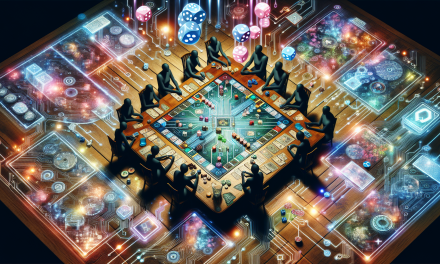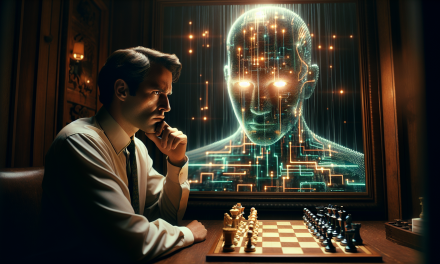Imagine walking into a library and discovering a section filled with books that look like they should be intimidating textbooks, but instead contain some of the most delightfully mind-bending puzzles you’ve ever encountered. That’s exactly what mathematician and logician Raymond Smullyan created throughout his remarkable career. His gentle approach to complex logical thinking mirrors the very skills we use when coding – breaking down problems, thinking step by step, and finding elegant solutions to seemingly impossible challenges.
Smullyan’s Puzzle Philosophy
Raymond Smullyan didn’t just write about logic – he turned it into a game. His books, with titles like “What Is the Name of This Book?” and “The Lady or the Tiger?“, contain puzzles that feel more like conversations with a clever friend than academic exercises. Take one of his classic knights and knaves puzzles: On an island, knights always tell the truth and knaves always lie. You meet someone who says, “I am a knave.” What are they?
If you’re thinking through this step by step (which is exactly what a coder does), you’ll realize this creates a logical impossibility. If they’re a knight, they must be telling the truth – but then they’d be claiming to be a knave, which would be false. If they’re a knave, they must be lying – but then their statement would actually be true. This isn’t just a clever riddle; it’s a demonstration of how our logical systems work and what happens when they encounter contradictions.
Logic and Coding Parallels
What makes Smullyan’s puzzles so valuable for developing computational thinking is how they train your brain to handle different types of reasoning. Just like when you’re debugging code, you learn to consider multiple possibilities simultaneously and trace through logical pathways systematically.
Consider his truth-telling and lying puzzles. When you encounter a character who might be honest or dishonest, you develop the same skill programmers use when handling different data types or conditional statements. You learn to think: “If this, then that” – which is precisely how if-else statements work in programming.
His self-referential puzzles are even closer to programming concepts. When a statement refers to itself, it creates the same kind of recursive thinking that shows up when we write functions that call themselves. The mental flexibility required to handle these paradoxes is identical to what you need when designing algorithms that build upon their own results.
Puzzle Examples
Smullyan’s approach to teaching logic mirrors how the best programming instructors work. He doesn’t start with abstract formal systems – instead, he presents scenarios you can visualize and work through intuitively. His island inhabitants, talking trees, and magical courts become characters in stories that make logical reasoning feel natural and engaging.
This storytelling approach reveals something important about how our minds process complex information. When we can attach logical rules to concrete scenarios – like figuring out which door leads to treasure or determining who’s telling the truth in a courtroom – our brains find it much easier to manipulate abstract concepts.
The same principle applies to coding. The most effective programmers don’t just memorize syntax; they develop mental models for how different programming constructs behave in various situations. Smullyan’s puzzles strengthen exactly this kind of model-building thinking.
Embracing Productive Confusion
One of Smullyan’s greatest gifts to puzzle enthusiasts was showing them how to be comfortable with confusion. His paradoxes often leave you temporarily bewildered, but this bewilderment becomes a stepping stone to deeper understanding. This mirrors a crucial aspect of learning to code: getting comfortable with not knowing the answer immediately.
When you encounter a bug in your code, you experience the same kind of productive confusion that Smullyan’s puzzles create. You know something isn’t working as expected, but figuring out why requires patient, systematic thinking. Both experiences teach you to treat confusion not as failure, but as the beginning of discovery.
His backwards reasoning puzzles are particularly valuable for developing debugging skills. Often, he presents a conclusion and asks you to figure out what could have led to it. This is exactly what happens when your program produces unexpected output – you work backwards from the result to identify where your logic went astray.
The Social Side of Problem Solving
What’s often overlooked about Smullyan’s work is how social his puzzles are. Many involve conversations, negotiations, or games between different characters. This social element reflects an important truth about coding: most programming happens in teams, and much of our logical reasoning involves understanding how different components of a system communicate with each other.
His puzzles about lying and truth-telling mirror the challenges of working with external data sources or user inputs in programming. You can’t always trust that information coming into your system is accurate or complete, so you need to build verification strategies and handle edge cases gracefully.
From Ancient Paradoxes to Modern Algorithms
Smullyan drew inspiration from ancient logical paradoxes and transformed them into accessible thought experiments. The famous liar paradox (“This statement is false”) becomes a playful exploration rather than an academic exercise. This same transformation – taking complex, intimidating concepts and making them approachable – is what happens when we teach coding through games, stories, and hands-on activities.
His work demonstrates that the most profound mathematical and logical insights often come disguised as entertainment. The problem-solving strategies you develop while working through his puzzles – breaking complex problems into smaller pieces, considering multiple scenarios, and thinking recursively – transfer directly to programming challenges.
Transferable Thinking Skills
Perhaps Smullyan’s greatest contribution wasn’t any individual puzzle, but his demonstration that logical thinking can be joyful, creative, and endlessly surprising. He showed that the same mental tools we use for the most abstract mathematical reasoning can also be applied to everyday problems with playfulness and wonder.
This perspective transforms how we approach not just coding, but any kind of systematic problem-solving. Instead of viewing logical challenges as tedious obstacles, we can see them as opportunities for creative thinking and discovery. Whether you’re debugging a recursive function or working through one of Smullyan’s knights and knaves scenarios, you’re engaging in the same fundamental human activity: using careful reasoning to navigate complexity and uncertainty.
The next time you encounter a particularly thorny programming problem, try approaching it with Smullyan’s spirit of playful curiosity. Sometimes the best solutions emerge not from grinding through the logic mechanically, but from treating the puzzle as an invitation to explore the surprising and delightful ways that rational thinking can unfold.








